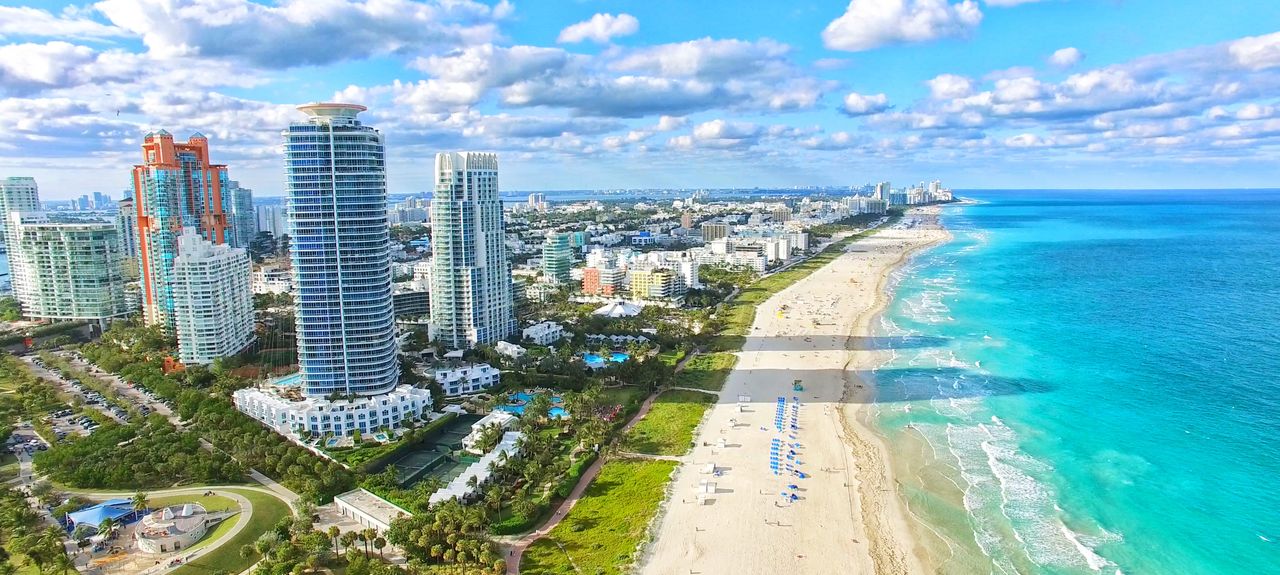
The United States acquired the area of Florida from Spain in 1819, although the area was not formally transferred until 1821. Florida Territory was organized on March 30, 1822, with generally the same boundary as the present state. Florida was admitted to the Union on March 3, 1845, as the 27th state.
Florida has a total area of 53,624.7 square miles, including 12,115 square miles of water, making it the 26th-largest state by area. Florida is bordered by Georgia and Alabama.
| Capital | Tallahassee |
| Largest City | Jacksonville |
| Second Largest City | Miami |
- Date of Statehood: March 3, 1845
- Population 1850: 87,445
- Population 1900: 528,542
- Population 1950: 2,771,305
- Population 2000: 15,982,378
- Population 2010: 18,801,310
- Nickname: Sunshine State
- Flower: Orange Blossom
- Tree: Sabal Palm
- Bird: Mockingbird
- Animal: Florida Panther
- Drink: Orange Juice
- Reptile: American Alligator
- Song: The Swanee River
About the Geographic Areas
AMERICAN INDIAN AREAS
Florida has 10 federally recognized American Indian areas. There are seven reservations, one with associated off-reservation trust land. Two areas consist of trust lands only. There is also one off-reservation trust land associated with a reservation in Alabama.
METROPOLITAN AND MICROPOLITAN STATISTICAL AREAS AND RELATED STATISTICAL AREAS
Florida has 20 metropolitan statistical areas, 10 micropolitan statistical areas, 3 metropolitan divisions, and 3 combined statistical areas.
COUNTIES
There are 67 counties in Florida. With the exception of Duval County, each county is governed by a board of county commissioners. Duval County does not function as a separate governmental unit; its governmental functions are administered by the city of Jacksonville.
COUNTY SUBDIVISIONS
There are 316 county subdivisions in Florida. They are all census county divisions (CCDs), which are delineated for statistical purposes, have no legal function, and are not governmental units. CCDs were first established in Florida for the 1960 census. Prior to 1960, the minor civil divisions used in the census included election precincts, polling places, and (county) commissioners’ districts.
PLACES
Florida has 920 places; 411 incorporated places and 509 census designated places. The incorporated places consist of 268 cities, 124 towns, and 19 villages. The minimum population to incorporate in Florida is 1,500 except in counties with a population of 50,000 or more, where the minimum population is 5,000. The minimum population density per acre required for incorporation, unless extraordinary conditions can be shown, is 1.5 people per acre, and the new entity must be at least two miles from the boundary of an existing incorporated place.
CENSUS TRACT/BLOCK GROUPS/BLOCKS
Florida has 4,245 census tracts, 11,442 block groups, and 484,481 blocks.
CONGRESSIONAL DISTRICTS
For the 111th Congress (January 2009-January 2011), Florida had 25 congressional districts. For the 113th Congress (January 2013-January 2015), Florida has 27 congressional districts as a result of reapportionment based on the 2010 Census.
SCHOOL DISTRICTS
Florida has 67 unified school districts.
STATE LEGISLATIVE DISTRICTS
There are 40 state senate districts and 120 state house districts in Florida.
URBAN AREAS
Florida has 104 urban areas; 30 urbanized areas and 74 urban clusters.
ZIP CODE TABULATION AREAS
There are 983 ZIP Code tabulation areas (ZCTAs) in Florida.


